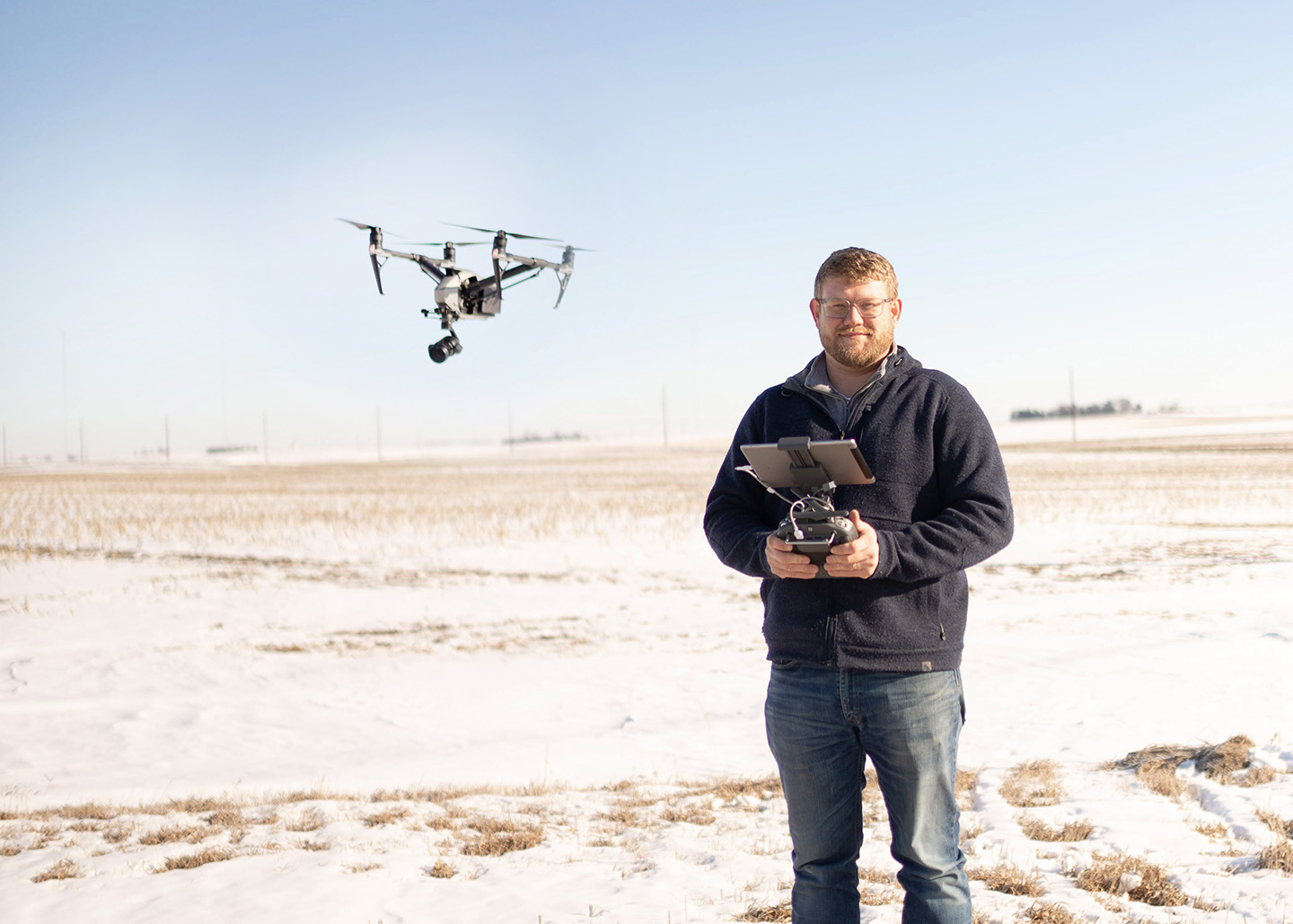
(Photo: Joclyn Bushman/Iowa Soybean Association)
Try an all-systems approach to a higher-yielding soybean
February 7, 2022 | Kriss Nelson
The evolution of soybean genetics has paved the way for farmers to achieve greater yields. But is relying on those genetics enough?
Trials conducted by the Iowa Soybean Association’s (ISA) Research Center for Farming Innovation (RCFI) seek to discover what it takes to achieve higher soybean yields.
“We are looking to see what management practices are best to unlock further yield potential toincrease farmer profitability,” says Teresa Middleton, ISA field services program manager. “If we can achieve higher yields with the same inputs and just different management, then we can increase the return of investment and soybean profitability.”
Soybean planting date and maturity trials are conducted at Iowa State University (ISU) research farms in small-plot research scenarios and on-farm experiments.
This past growing season, the ISA RCFI team recruited several farmer cooperators to participate in commercial setting trials, according to Middleton.
“The goal is to make sure what we’re seeing in the ISU small plots is consistent with real-world applications,” Middleton says.
A systems approach
The RCFI team takes a systems approach to determine if particular management practices, fungicides, fertilizers or biologicals improve soybean productivity.
One example: the planting date trials. “We look at how different maturity beans react to various planting dates and fungicide applications rather than looking at each of those factors on their own,” says Middleton.
Combining these factors into one trial helps the RCFI team better understand the systems approach to soybean production.
“Differences in the emergence and other critical growth points may impact pest pressure between the systems, which can ultimately impact yield,” says Anthony Martin, ISA senior field services program manager. “It is hard to predict with a single treatment study.”
However, combining data from multiple trials may help unlock yield impacts.
“Instead of simply looking at when to plant, combining the planting date with a longer relative maturity variety may result in utilization of more of a growing season,” says Martin.
A longer growing season means more sunlight, leading to more pods on the plant and higher yields.
Middleton says planting earlier also allows the crop canopy to close sooner, conserving soil moisture and reducing weed competition.
There could be some drawbacks to an earlier soybean planting date, however.
“There is no benefit to mudding in your beans just to get them in early,” says Martin.
Dan De Vries, ISA farmer from Prairie City, participated in a planting date trial in 2021.
In an 80-acre field, he planted two different varieties – an early variety of a 2.3 maturity soybean and a latermaturing 2.9 soybean on separate planting dates, approximately April 15 and May 1.
Although dry conditions last spring deterred the earlier planted varieties from emerging in a timely manner, De Vries believes an earlier planted soybean could be advantageous to achieving higher yields.
“Research shows the highest yield potential is planting in the April 16 to April 30 window for both corn and soybeans,” he says. “I think the majority of farmers are exploring ways to plant everything in this optimum window.”
Ultimately, there are several factors in producing a high-yield soybean. Decisions and practices used together in a systems approach could show how those practices interact and potentially compound for more significant yield potential.
“Sometimes, there can be a multiplying effect of management practices, so it is important to look at the whole picture rather than just one individual practice at a time,” Martin says.
Role of biologicals
Do biologicals have a position in the systems approach to raising a higher yielding soybean?
“Biologicals are a bit of a roller coaster right now,” says Martin. “They aren’t all created equal; each one is going to have specific conditions it works well in.”
To find out if a biological will be a fit for your farm, Martin advises doing your own on-farm trials for a few growing seasons to learn what works.
“There are many on the market now to help crops acquire plant-available P and K or to help fix nitrogen,” says Middleton.
For more information on conducting an on-farm trial to test biologicals or a systems approach to a higher-yielding soybean, contact Anthony Martin at amartin@iasoybeans.com
Back